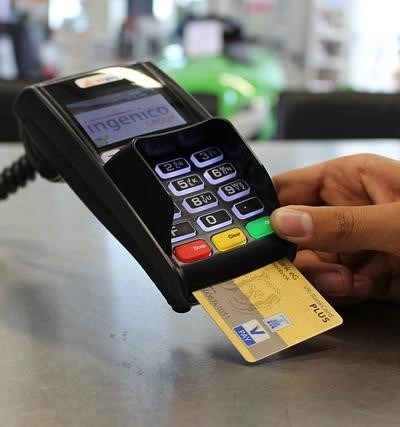
The proliferation of Internet of Things (IoT) devices in retail settings offers significant advantages in terms of efficiency and customer experience. However, this increased connectivity also expands the attack surface, making robust IoT security paramount. Failing to prioritize security can lead to substantial financial losses, reputational damage, and legal repercussions. This advisory outlines key considerations for securing your retail environment’s IoT infrastructure.
Assessing Your IoT Landscape
Before implementing any security measures, conduct a thorough inventory of all connected devices. This includes smart devices like smart shelves, security cameras, environmental sensors, and point-of-sale (POS) systems. Understanding your current infrastructure is the first step towards effective retail security. Consider the data each device handles and its potential impact if compromised. This assessment will inform your vulnerability management strategy.
Prioritizing Network Security
Strong network security is fundamental. Segment your network to isolate IoT devices from critical systems like POS terminals and customer databases. Employ firewalls and intrusion detection systems (IDS) to monitor network traffic and prevent unauthorized access. Regularly update firmware on all devices to patch known vulnerabilities. Consider using a dedicated network for IoT devices, further enhancing data security.
Securing Point-of-Sale (POS) Systems
Point-of-sale security is crucial, as POS systems handle sensitive customer payment information. Ensure compliance with standards like PCI DSS. Implement strong access control mechanisms, including robust authentication and authorization protocols. Regularly monitor POS systems for suspicious activity and implement intrusion detection capabilities.
Data Security and Privacy
Protecting customer data is paramount. Utilize encryption both in transit and at rest for all sensitive data. Implement strong data loss prevention (DLP) measures. Comply with relevant regulations such as GDPR, ensuring you have a clear data privacy policy and procedures for handling data breaches. Employ threat intelligence feeds to stay ahead of emerging threats.
RFID Security and Inventory Management
RFID security is vital for accurate inventory management and loss prevention. Secure RFID readers and tags to prevent unauthorized access or modification. Implement access controls to limit who can read or write data to RFID tags. This contributes to overall supply chain security.
Implementing a Comprehensive Security Strategy
- Regular Security Audits: Conduct periodic security audits to identify and address vulnerabilities.
- Employee Training: Train employees on best practices for cybersecurity hygiene and data protection.
- Incident Response Plan: Develop a comprehensive incident response plan to handle security breaches effectively.
- Continuous Monitoring: Implement continuous monitoring to detect and respond to threats in real time.
By implementing these measures, retailers can significantly reduce their risk exposure and ensure the security of their IoT deployments. Remember, proactive security measures are far more cost-effective than reacting to a data breach or security incident. Staying informed on the latest cybersecurity threats and maintaining compliance with relevant regulations is essential for long-term success.
Beyond the Basics: Advanced IoT Security for Retail
While foundational security measures are crucial, a truly robust retail security posture requires a more sophisticated approach. This advisory delves into advanced strategies for securing your IoT infrastructure.
Advanced Network Security Techniques
Implementing a Zero Trust Network Access (ZTNA) architecture is highly recommended. ZTNA verifies every access request, regardless of location, ensuring only authorized users and devices can access network resources. This complements traditional network security measures by adding another layer of protection against lateral movement within your network. Employing micro-segmentation further isolates smart devices and other IoT assets, minimizing the impact of a potential breach.
Strengthening Data Security with Advanced Encryption
While basic encryption is essential, consider employing more robust methods such as homomorphic encryption for sensitive data processed by IoT security systems. This allows computations on encrypted data without decryption, enhancing data security significantly. Implement data loss prevention (DLP) tools that go beyond simple keyword filtering, utilizing machine learning to identify and prevent the exfiltration of sensitive information.
Proactive Vulnerability Management
Vulnerability management shouldn’t be a reactive process. Utilize automated vulnerability scanning tools to continuously monitor your IoT security landscape. Integrate these tools with your threat intelligence feeds to prioritize patching based on the severity and likelihood of exploitation. Employ a robust patch management system to ensure timely updates for all smart devices and systems.
Behavioral Analytics and Anomaly Detection
Enhance your intrusion detection capabilities by implementing behavioral analytics. This allows you to establish baselines for normal device activity and identify anomalies that might indicate malicious activity. This proactive approach can detect subtle threats that traditional signature-based intrusion detection systems might miss. Combine this with Security Information and Event Management (SIEM) systems to correlate alerts from various sources, providing a holistic view of your security posture.
Supply Chain Security and Vendor Management
Supply chain security is paramount. Vet your vendors carefully, ensuring they adhere to stringent cybersecurity practices. Require them to provide evidence of their security protocols, including access control measures, authentication and authorization processes, and vulnerability management programs. This is especially crucial for RFID security and inventory management systems.
Compliance and Legal Considerations
Stay abreast of evolving regulations, including GDPR and PCI DSS. Ensure your IoT security practices align with all relevant legal requirements. Maintain detailed records of your security measures and incident response activities to demonstrate compliance in the event of an audit or investigation. Regularly review and update your policies and procedures to reflect changes in the threat landscape.
Leveraging AI and Machine Learning
Explore the use of Artificial Intelligence (AI) and Machine Learning (ML) to enhance various aspects of your IoT security. AI-powered solutions can assist with anomaly detection, threat prediction, and automated incident response. This can significantly improve the efficiency and effectiveness of your security operations.
Implementing these advanced measures, in conjunction with the fundamental security practices outlined previously, will significantly enhance the IoT security of your retail environment, protecting your business, your customers, and your brand reputation.


A well-structured and practical guide. The advisory rightly highlights the importance of a thorough IoT device inventory as the foundation for effective security. The advice on network segmentation and the use of firewalls and IDS is essential for mitigating risks. This is a must-read for any retail business utilizing IoT technology.
Excellent resource for understanding and addressing the security challenges posed by IoT devices in retail. The advisory
This advisory offers a balanced perspective on the benefits and risks associated with IoT in retail. The actionable advice, including specific security measures and best practices, is extremely useful. The clear and concise writing style makes it accessible to a broad audience, regardless of technical expertise. A valuable contribution to the field.
This advisory provides a clear and concise overview of crucial IoT security considerations for retail environments. The step-by-step approach, focusing on assessment, network security, POS security, and data protection, is highly effective. The emphasis on regularly updating firmware and employing strong access controls is particularly valuable.